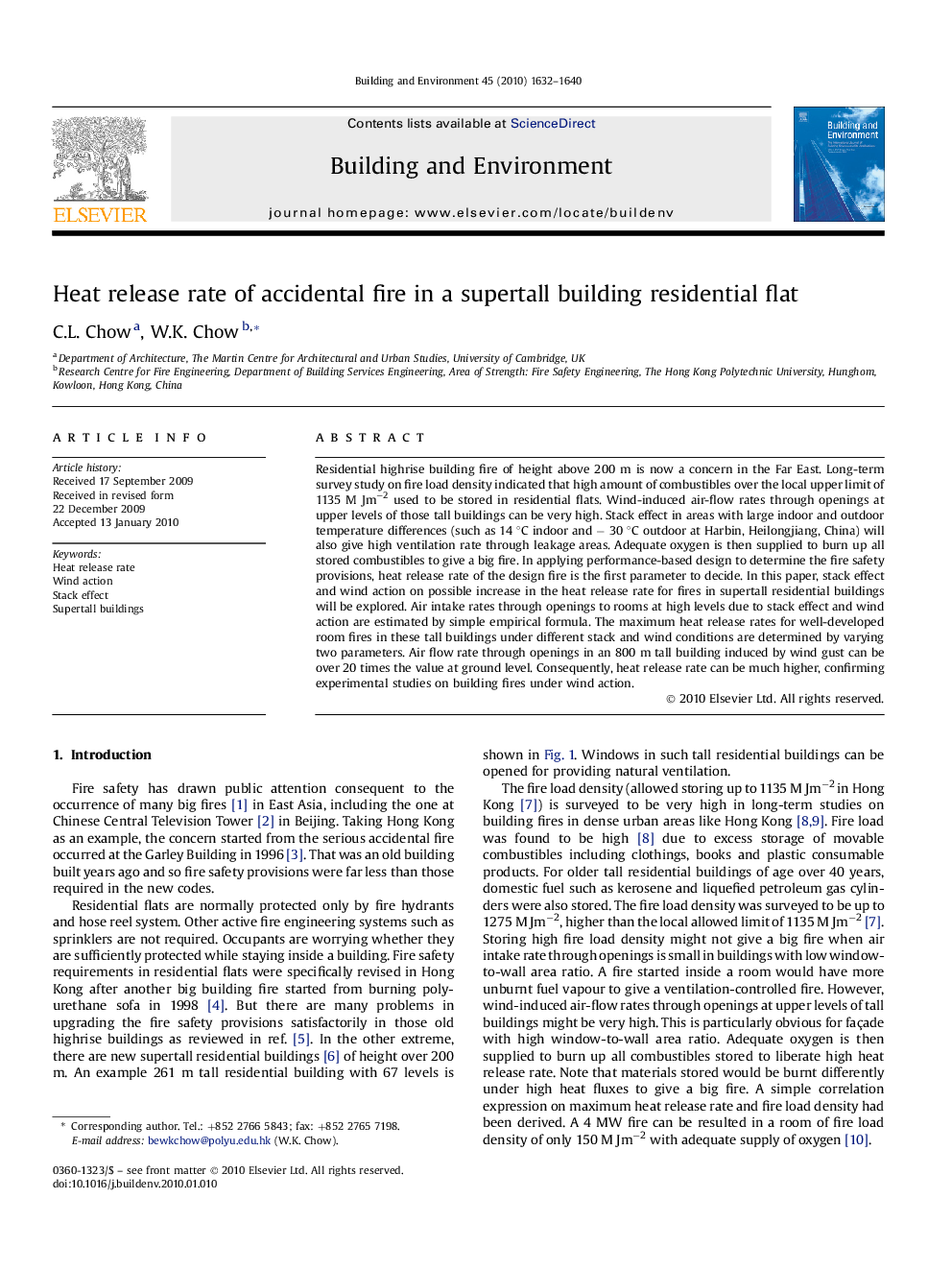| کد مقاله | کد نشریه | سال انتشار | مقاله انگلیسی | نسخه تمام متن |
|---|---|---|---|---|
| 249080 | 502596 | 2010 | 9 صفحه PDF | دانلود رایگان |

Residential highrise building fire of height above 200 m is now a concern in the Far East. Long-term survey study on fire load density indicated that high amount of combustibles over the local upper limit of 1135 M Jm−2 used to be stored in residential flats. Wind-induced air-flow rates through openings at upper levels of those tall buildings can be very high. Stack effect in areas with large indoor and outdoor temperature differences (such as 14 °C indoor and − 30 °C outdoor at Harbin, Heilongjiang, China) will also give high ventilation rate through leakage areas. Adequate oxygen is then supplied to burn up all stored combustibles to give a big fire. In applying performance-based design to determine the fire safety provisions, heat release rate of the design fire is the first parameter to decide. In this paper, stack effect and wind action on possible increase in the heat release rate for fires in supertall residential buildings will be explored. Air intake rates through openings to rooms at high levels due to stack effect and wind action are estimated by simple empirical formula. The maximum heat release rates for well-developed room fires in these tall buildings under different stack and wind conditions are determined by varying two parameters. Air flow rate through openings in an 800 m tall building induced by wind gust can be over 20 times the value at ground level. Consequently, heat release rate can be much higher, confirming experimental studies on building fires under wind action.
Journal: Building and Environment - Volume 45, Issue 7, July 2010, Pages 1632–1640